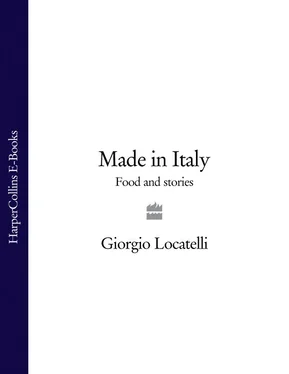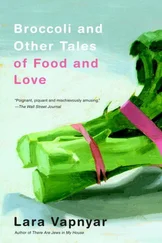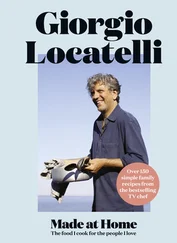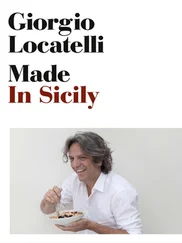The big difficulty is over bottles that are just labelled ‘aceto balsamico di Modena’. Ever since the world ‘discovered’ balsamic vinegar there has been a huge industrial production, which bears no relation to the true artisan product. The legal definition of this vinegar is very loose. Much of it is only white wine vinegar with caramel added. I could make it for you in a pot in the kitchen in 15 minutes – but what an insult to the people who have been making beautiful vinegar in the proper way for hundreds of years. Some of it, though, has been made in a way that is similar to the traditional methods, using at least some cooked grape must, and aged in wood for at least a few years. So how to tell? Often ‘aceto balsamico’ vinegar comes in elegant bottles, sealed with wax, with beautiful labels that suggest ancient traditions, but it is important not to be distracted by the lyrical descriptions that the producers tend to use, and go straight to the ingredients list. The first thing to be listed should be the must of the grape, and there should be no mention of caramel, or any added flavourings. Look for a vinegar that says it has been aged in wooden barrels – as ‘aged in wood’ can sometimes mean wood chips have been added as the vinegar ages.
There is yet another type of vinegar, called vincotto (‘cooked wine’), which is similar to balsamic, made in a serious way but without the ageing and complexity. They say vincotto has its roots in the old Roman tradition of pressing grapes that had been partly dried, then fermenting them to make raisin wine. It became something farmers would make as a sweet dressing for festivals, or as a tonic, but is now being produced commercially, using the Trebbiano grape in the North. As you move further south it is more likely to be made with the Negroamaro and the Black Malvasia, which are left to dry on the vine or on wooden frames before being ‘cooked’ and reduced for 24 hours. The syrup goes into small oak barrels with some of the ‘mother’ or ‘starter’ vinegar from their wine vinegar production, and it is then aged for four years.
In the kitchen at Locanda we use various different balsamic vinegars, and also sometimes vincotto, but for the table we use only the ‘tradizionale’, which we often dispense with great ceremony, using a syringe. It is very expensive but used sparingly it will last you a long time. I would say that if you can only afford to buy one bottle of it in your life, it is worth it, because only by tasting the true traditional vinegar can you begin to understand what balsamic vinegar is about. It is something I would like everyone around the world to experience, because then it can be used as a benchmark by which to judge other, less expensive, balsamic vinegars.
Almost everyone likes the taste of a true balsamic vinegar, kids especially. At one time, the only way we could get my daughter Margherita to eat a green bean salad was to toss it in balsamic vinegar. It is like a natural flavour-enhancer. Good balsamic vinegar needs to be used very simply, though, with specific ingredients. Its combination of sweetness and acidity is at its best with salty, fatty things: so a few drops are perfect with Parmesan, especially the concentrated flavour of an aged cheese. A lovely thing to serve before dinner with an aperitif is just a sliver of Parmesan on a spoon with a drop of vinegar on top. Or sometimes, when we have held parties at Locanda, we have put out half a wheel of Grana Padano cheese, which is similar to Parmesan (see page 209), so that people can pick up small pieces, drizzle over some vinegar and eat it with a glass of Prosecco. I always keep a good bottle of balsamic vinegar at home and sometimes, if I go home late at night from the kitchen, that is all I have – a big wedge of Parmesan with a little vinegar. Since both the cheese and the vinegar originate in the same region of Italy, there is an affinity there that comes with produce of the same land, and so the combination is very satisfying.
Sometimes we make agnolotti with Parmesan, tossed in a little butter, with a couple of drops of balsamic vinegar added; and I love to serve balsamic vinegar with pork belly, or with calves’ liver, in a simple sauce made with sultanas and nuts (see page 484). A little drop is amazing with plainly cooked wild salmon, and balsamic vinegar and strawberries is another famous combination.
I don’t think balsamic vinegar works with bland food. With a cheese like mozzarella, the effect is wasted, and I wouldn’t usually use it to dress a leaf salad, as it loses its impact, unless you are using strongly flavoured leaves like chicory, radicchio or rocket. And I completely disapprove of serving bread with a bowl each of oil and balsamic vinegar – oil yes, but if you dip good bread into balsamic vinegar, you ruin both things. For me it doesn’t work with complicated dishes either. If you were to spoon balsamic vinegar over an elaborate fish dish with lots of different elements, yes, it would add another level of flavour, but again it would be a waste of something special, that deserves to be treated with respect.
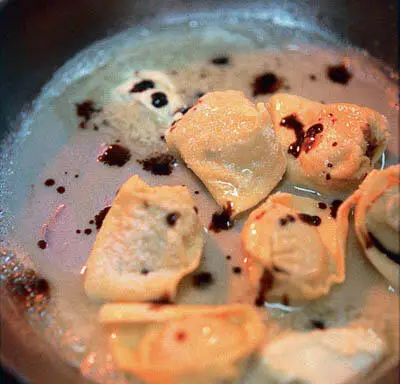

There is no real Italian equivalent for the word ‘vinaigrette’ because traditionally, when you went into a restaurant and ordered a salad, they would bring the oil and vinegar, and some salt to the table – or if you wanted oil and lemon, you would just ask for olio e limone. Nowadays, if a salad comes ready-dressed, we just borrow the French term. Or we might use the word condimento, which can mean any kind of seasoning or flavouring as well as a dressing; or even aspretto – from aspro meaning sour. We usually use this term when we create a dressing in which there is an element that we have made ourselves – such as our saffron ‘vinaigrette’, which we would call Aspretto di zafferano.
When my brother, Roberto, and I were kids, we were sometimes taken to a local restaurant where dressing the salad was considered a bit of an art. Usually we didn’t want to eat salad at all; we just wanted to watch the waiter perform his ceremony at the table. He would take a silver spoon, put some salt into it, then pour in the vinegar and let the salt dissolve in it. Then he would drizzle a line of oil into the salad bowl and pour in the seasoned vinegar at the same time, so the two met in a stream. Finally, he would put in the leaves and toss everything together in front of us.
The point is that dressing salad leaves should be done at the very last moment before serving, to preserve some crunchiness. Wash the leaves well, trying not to squeeze them, let them drain naturally in a colander, then finish off in a salad spinner. Dress the leaves very lightly so that the dressing just coats them, without drowning, and when you toss everything together, really lift up the leaves so that the dressing coats every single one.
If you are dressing a more complex salad that includes other ingredients besides leaves, think about their consistency before you add the dressing. It is only the delicate leaves that need to be dressed at the last minute, so if, for example, you are making a rocket and tomato salad, the heavier, denser tomato will need more seasoning – earlier – than the rocket. What I would do is put the tomatoes in the salad bowl with some dressing, season them and leave them for ten minutes or so to soak up the flavours and release the juices that the salt will bring out. Then, at the last minute, I would throw in the rocket and toss everything together, adding a little more vinaigrette if necessary – a lovely thing to do at the table.
Читать дальше
